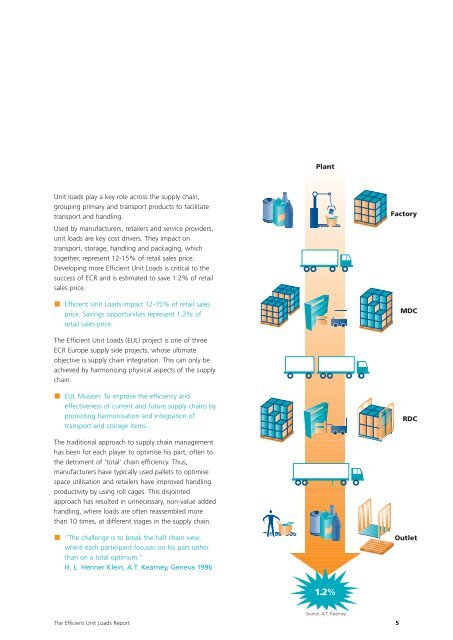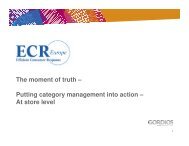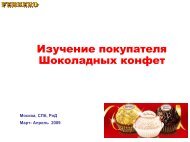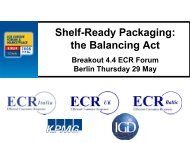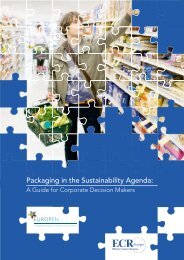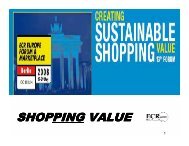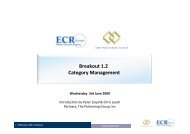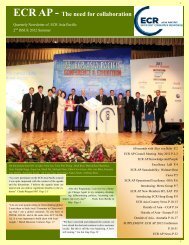Create successful ePaper yourself
Turn your PDF publications into a flip-book with our unique Google optimized e-Paper software.
Unit loads play a key role across the supply chain,<br />
grouping primary and transport products to facilitate<br />
transport and handling.<br />
Used by manufacturers, retailers and service providers,<br />
unit loads are key cost drivers. They impact on<br />
transport, storage, handling and packaging, which<br />
together, represent 12-15% of retail sales price.<br />
Developing more Efficient Unit Loads is critical to the<br />
success of <strong>ECR</strong> and is estimated to save 1.2% of retail<br />
sales price.<br />
Efficient Unit Loads impact 12-15% of retail sales<br />
price. Savings opportunities represent 1.2% of<br />
retail sales price.<br />
The Efficient Unit Loads (EUL) project is one of three<br />
<strong>ECR</strong> Europe supply side projects, whose ultimate<br />
objective is supply chain integration. This can only be<br />
achieved by harmonising physical aspects of the supply<br />
chain.<br />
EUL Mission: To improve the efficiency and<br />
effectiveness of current and future supply chains by<br />
promoting harmonisation and integration of<br />
transport and storage items.<br />
The traditional approach to supply chain management<br />
has been for each player to optimise his part, often to<br />
the detriment of ‘total’ chain efficiency. Thus,<br />
manufacturers have typically used pallets to optimise<br />
space utilisation and retailers have improved handling<br />
productivity by using roll cages. This disjointed<br />
approach has resulted in unnecessary, non-value added<br />
handling, where loads are often reassembled more<br />
than 10 times, at different stages in the supply chain.<br />
”The challenge is to break the half chain view,<br />
where each participant focuses on his part rather<br />
than on a total optimum.”<br />
H. L. Henner Klein, A.T. Kearney, Geneva 1996<br />
Plant<br />
1.2%<br />
Source: A.T. Kearney<br />
The Efficient Unit Loads Report 5<br />
Factory<br />
MDC<br />
RDC<br />
Outlet


